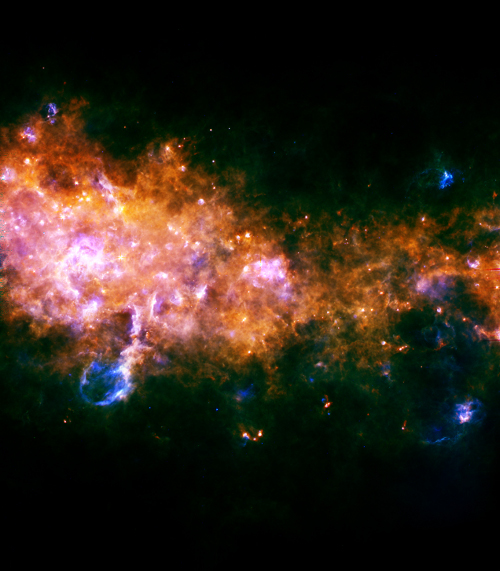| Basic Information | |
| What is this? | A region of the Galactic Plane showing stars forming and blowing bubbles in space |
| Where is it in the sky? | Towards the constellation of Aquila the Eagle |
| How big is it? | The image is two degrees across |
| How far away is it? | The material is thousands of light years away |
| What do the colours represent? | Red material is colder, while blue is warmer |
Downloads
See this object in:
This image combines data from PACS and SPIRE to form a three-colour image. PACS images at 70 microns (blue), 160microns (green) are combined with the SPIRE 250 microns channel (red). Cooler material is shown in red, while warmer material is blue – but all just 10-50 degrees above absolute zero. This image is taken in constellation of Aquila and shows the entire assembly line of newborn stars. The diffuse glow reveals the widespread cold reservoir of raw material which our Galaxy has in stock for the production of new stars.
Two bright star forming regions are seen on the left and centre, called W43 and G29.9 respectively. Below W43, a cavity can be seen in the interstellar medium. The strong winds from the stars forming in the dense clump are pushing the material out, blowing the bubble.
This image is taken as part of a project called “Hi-GAL”, which aims to image a strip across the plane of our Galaxy towards its central regions. This is a section 30 degrees away from the centre of our Galaxy.

